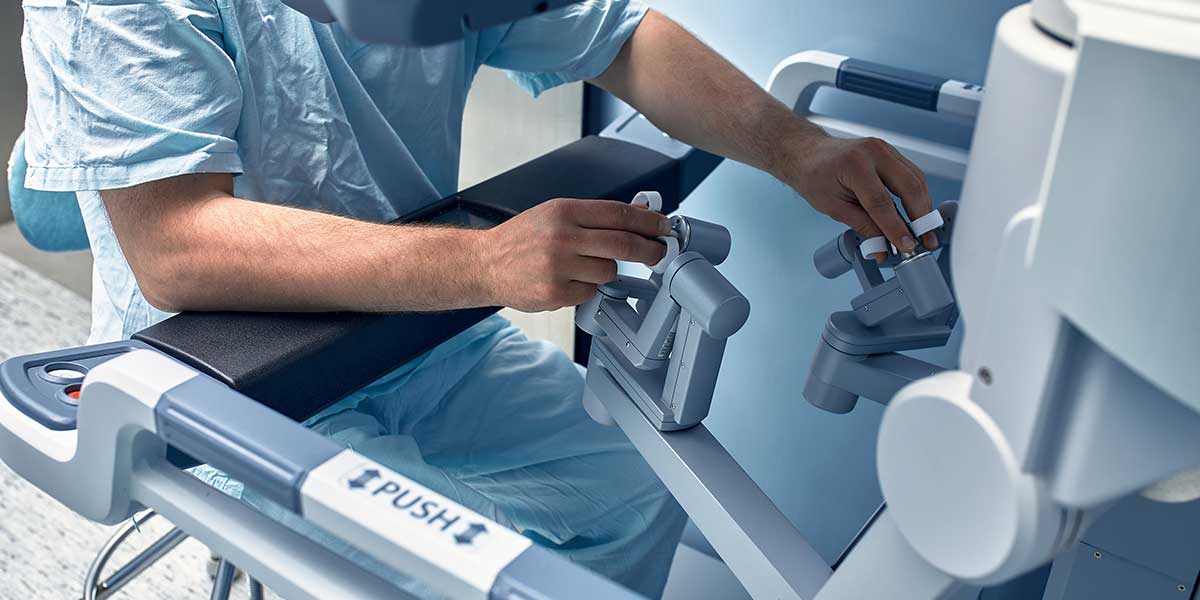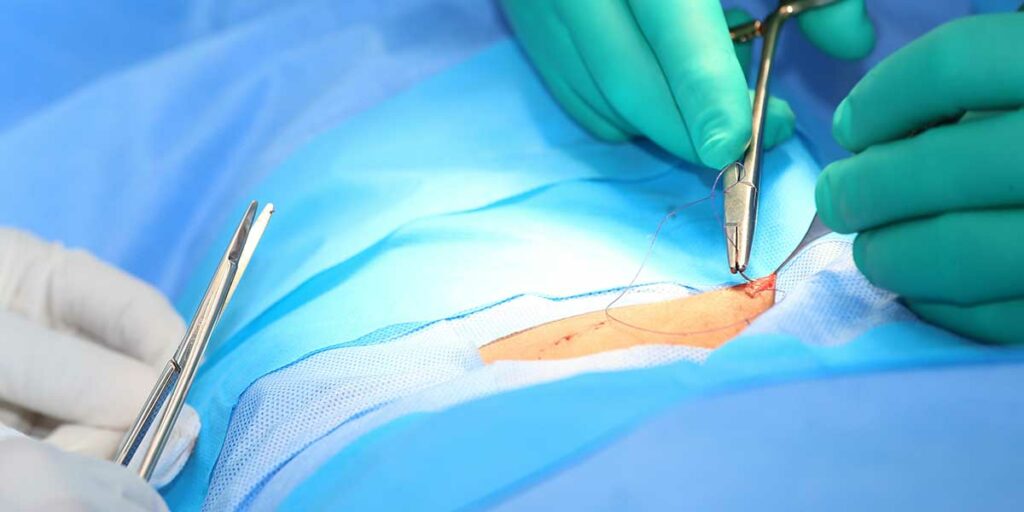Introduction to Robotic Surgery with the Da Vinci System
Robotic-assisted surgery is revolutionizing modern medicine, offering minimally invasive procedures with enhanced precision, reduced recovery times, and improved patient outcomes. At the forefront of this innovation is the Da Vinci Surgical System, an advanced robotic platform designed to assist surgeons in performing complex operations with exceptional accuracy.
In this post, we’ll explore the benefits, applications, and future of robotic surgery using the Da Vinci robot, ensuring you have all the information you need about this cutting-edge medical technology.
What Is the Da Vinci Surgical System?
The Da Vinci Surgical System is a state-of-the-art robotic-assisted surgical platform developed by Intuitive Surgical. It consists of three main components:
- Surgeon Console – Where the surgeon controls the robotic arms using hand and foot movements while viewing a high-definition, magnified 3D surgical field.
- Patient-Side Cart – The robotic arms hold miniaturized instruments that replicate the surgeon’s hand movements with greater precision and dexterity.
- Vision System – A high-definition, 3D camera provides an enhanced, magnified view of the surgical area, improving accuracy.
Benefits of Robotic Surgery Using the Da Vinci Robot
Robotic-assisted surgery with the Da Vinci system offers several advantages over traditional open and laparoscopic surgery, including:
- Greater Precision and Accuracy
The robotic arms eliminate natural hand tremors, allowing for extremely precise movements, which is crucial for delicate procedures like prostate surgery, heart valve repair, and cancer surgeries.
- Minimally Invasive with Small Incisions
Unlike traditional surgery, Da Vinci robotic surgery requires only a few small incisions, leading to:
- Less blood loss
- Lower risk of infection
- Reduced post-operative pain
- Minimal scarring
- Faster Recovery Time
Patients undergoing robotic-assisted procedures often experience shorter hospital stays and quicker recovery times, allowing them to return to daily activities sooner than with traditional surgery.
- Enhanced 3D Visualization for Surgeons
The high-definition, 3D camera offers a magnified view of the surgical site, improving precision and helping surgeons avoid critical structures like nerves and blood vessels.
- Less Fatigue for Surgeons
Surgeons operate from an ergonomic console, reducing physical strain and allowing for better focus and control during lengthy procedures.
Common Procedures Performed with the Da Vinci Surgical System
The Da Vinci robot is used in various robotic-assisted surgeries, including:
- Urologic Robotic Surgery
- Robotic Prostatectomy – A minimally invasive option for prostate cancer surgery with fewer complications.
- Nephrectomy (Kidney Removal) – Offers better precision and lower risk of complications.
- Gynecologic Robotic Surgery
- Hysterectomy (Uterus Removal) – Less invasive, with faster recovery and minimal pain.
- Endometriosis Surgery – A precise approach to removing endometrial tissue and relieving symptoms.
- General Surgery
- Robotic Hernia Repair – Offers greater precision and lower recurrence rates.
- Gallbladder Removal (Cholecystectomy) – A minimally invasive alternative to laparoscopic surgery.
- Robotic Colectomy – Minimally invasive colon surgery for cancer and other indications leads to faster recovery and improved outcomes.
- Cardiothoracic Surgery
- Robotic Valve Repair – Used for treating heart valve disease with high precision.
- Lung Cancer Surgery – A minimally invasive method for lung resection procedures.
The Future of Robotic Surgery
Robotic surgery is continuously evolving, with new advancements expected to enhance precision, expand accessibility, and improve patient outcomes. Key trends in robotic-assisted surgery include:
- AI Integration – Artificial intelligence (AI) could assist in real-time surgical decision-making and procedure optimization.
- Haptic Feedback Technology – Future robotic systems allow surgeons to “feel” tissue resistance, improving control.
- Miniaturization of Robotic Instruments – Smaller, more flexible robotic arms could allow for even less invasive procedures.
- Telesurgery (Remote Surgery) – With high-speed internet and advanced robotics, surgeons may soon perform remote robotic surgeries from anywhere in the world.
Why Choose The ONE Surgical for Your Robotic Surgery?
Dr. Sugumaran is fellowship trained in Minimally Invasive Foregut Surgery. He has extensive experience with Robotic Surgery and has obtained certification in Robotic Surgery during his training. He works closely with your team to ensure you are receiving the best care possible!
Conclusion
The Da Vinci Surgical System represents the future of modern surgery, offering minimally invasive procedures with unmatched precision and faster recovery times. As technology advances, robotic surgery will become even more integral to healthcare, providing safer and more effective treatment options for a wide range of conditions.
If you’re considering robotic surgery or want to learn more about the Da Vinci Surgical System, consult with a qualified surgeon to explore your options.
Sources
- Intuitive Surgical – Official Website
- https://www.intuitive.com
- Provides official information about the Da Vinci Surgical System, its applications, and advancements in robotic surgery.
- Mayo Clinic – Robotic Surgery Overview
- https://www.mayoclinic.org
- Offers insights into the benefits, risks, and uses of robotic-assisted surgical procedures.
- American Urological Association – Robotic Prostatectomy
- https://www.auanet.org
- Discusses robotic-assisted prostate surgery, including advantages and patient outcomes.
- National Institutes of Health (NIH) – Robotic Surgery Research
- https://www.ncbi.nlm.nih.gov/pubmed/
- Contains numerous peer-reviewed studies on the effectiveness and advancements of robotic-assisted surgery.
- Johns Hopkins Medicine – Robotic Surgery Programs
- https://www.hopkinsmedicine.org
- Provides detailed patient education on robotic-assisted procedures and their role in modern medicine.



